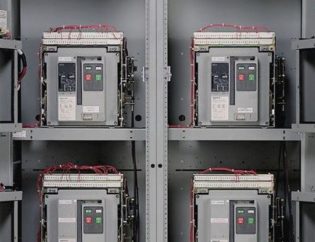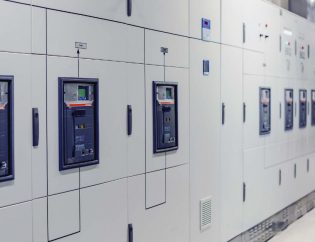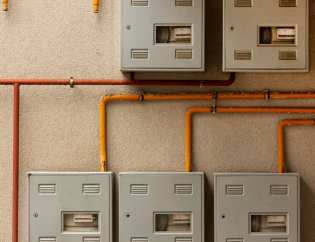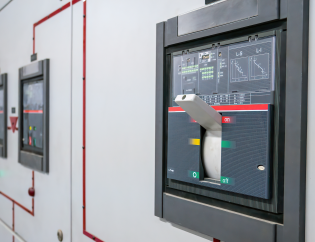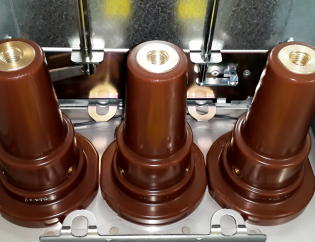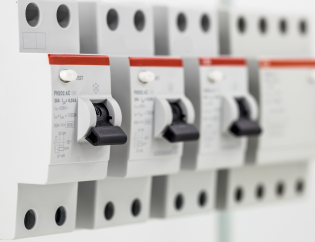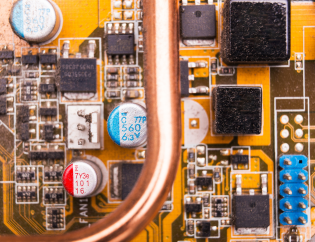Benefits of Improving Power Quality:
Improving power quality in commercial and industrial settings can offer significant benefits such as reducing downtime, increasing equipment lifespan, enhancing safety and reliability, improving energy efficiency, lowering maintenance costs, and increasing customer satisfaction. In this blog post, we will explore these benefits in detail and how they can be achieved through different power quality improvement techniques.
Reduced Downtime and Production Losses:
One of the most significant benefits of improving power quality is a reduction in downtime and production losses. Power interruptions or fluctuations can cause disruptions to industrial processes, leading to lost productivity, missed deadlines, and revenue losses. By ensuring a stable and reliable power supply, businesses can minimize the risk of such disruptions and keep their operations running smoothly.
Increased Equipment Lifespan:
Power quality can also impact the lifespan of electrical equipment. Poor quality power can cause equipment to overheat, resulting in damage or premature failure. By improving power quality, businesses can extend the lifespan of their equipment, reducing maintenance and replacement costs.
Enhanced Safety and Reliability:
Improving power quality can also enhance safety and reliability. Poor quality power can cause electrical devices to malfunction, creating safety hazards for workers and increasing the risk of fires. By ensuring a stable and reliable power supply, businesses can minimize these risks and ensure the safety of their workers.
Improved Energy Efficiency:
Improving power quality can also lead to improved energy efficiency. Poor quality power can result in wasted energy, as electrical devices draw more power than they need to compensate for voltage fluctuations. Businesses can reduce wasted energy and lower their energy bills by ensuring a stable and reliable power supply.
Lower Maintenance Costs:
Improving power quality can also lower maintenance costs. Poor quality power can cause equipment to fail prematurely, resulting in higher maintenance and repair costs. By improving power quality, businesses can extend the lifespan of their equipment, reducing the need for frequent repairs and replacements.
Increased Customer Satisfaction:
Finally, improving power quality can lead to increased customer satisfaction. Poor quality power can cause disruptions to services, leading to dissatisfied customers. By ensuring a stable and reliable power supply, businesses can improve the quality of their services and enhance customer satisfaction.
Improved Power Quality Techniques:
There are several techniques used to enhance power quality, including:
Power Factor Correction:
Power factor correction involves improving the efficiency of electrical devices by reducing the amount of reactive power they consume. This can lead to improved energy efficiency and lower energy bills.
Voltage Regulation:
Voltage regulation involves stabilizing the voltage of the power supply to ensure a consistent level of power to electrical devices. This can reduce the risk of equipment failure and improve safety.
Harmonic Mitigation:
Harmonic mitigation involves reducing the amount of harmonic distortion in the power supply. This can improve the efficiency of electrical devices and reduce the risk of damage or failure.
Surge Protection:
Surge protection involves protecting electrical devices from power surges and spikes, which can cause damage or failure. This can improve the lifespan of equipment and reduce maintenance costs.
Uninterruptible Power Supply (UPS):
A UPS is a backup power supply that can provide power to electrical devices in the event of a power outage. This can reduce the risk of downtime and production losses.
Backup Generators:
Backup generators can provide an alternative power source during a power outage. This can ensure that critical equipment continues functioning and reduce the risk of downtime and production losses.
Cost-Benefit Analysis:
When evaluating power quality improvement investments, it is important to consider the cost and benefits of each technique. While improving power quality can lead to significant benefits, the cost of implementation must also be considered. A cost-benefit analysis can help businesses determine which strategies are the most cost effective and offer the greatest return on investment.
For example, power factor correction may be a cost-effective technique for businesses that consume large amounts of reactive power. At the same time, voltage regulation may be more appropriate for companies with sensitive equipment that requires stable voltage levels.
Are you tired of paying high electricity bills and want to improve the efficiency of your electrical system? ECSKSA can help! Our power factor correction panel boards are designed to optimize the energy consumption of your facility by correcting power factor imbalances, reducing energy waste, and lowering your electricity bills. Contact us today to learn more about our services and how we can help you save money while improving your electrical system’s performance.
Power Quality Monitoring and Maintenance:
It is important to continuously monitor and maintain the power supply to ensure sustained improvements in power quality. Proactive maintenance can help identify and address issues before they lead to downtime or equipment failure. Service level agreements and contracts can also be established to ensure that maintenance is conducted regularly and that any problems are addressed promptly.
Conclusion:
Improving power quality in commercial and industrial settings can offer significant benefits, including reduced downtime, increased equipment lifespan, enhanced safety and reliability, improved energy efficiency, lower maintenance costs, and increased customer satisfaction. Techniques such as power factor correction, voltage regulation, harmonic mitigation, surge protection, UPS, and backup generators can be used to achieve better power quality. A cost-benefit analysis can help businesses determine which techniques offer the greatest return on investment. It is also important to continuously monitor and maintain power quality and comply with relevant standards and regulations. By improving power quality, businesses can ensure a stable and reliable power supply, reduce costs, and enhance their operations.
Speak to our experts and get a customized solution for your business that meets your specific energy needs and requirements.
Do you have a question in your mind? If so, make sure to fill out the form below!

